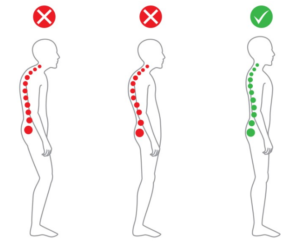In the sphere of healthcare, myths and misunderstandings often obscure the truth behind various therapeutic practices, and chiropractic treatment stands no stranger to these misconceptions. Embraced by many for its holistic approach to well-being, chiropractic care has also been shrouded in skepticism and misinformation.
This article aims to dismantle prevalent myths surrounding chiropractic treatment, unraveling the realities behind these misconceptions. As misconceptions often sow seeds of doubt and hinder individuals from exploring potentially beneficial avenues of care, it becomes imperative to dissect these fallacies and illuminate the truth about chiropractic practices.
Join us on a journey through the maze of myths that surround chiropractic care. We will explore, debunk, and clarify misconceptions to offer a clearer understanding of the principles, benefits, and safety of chiropractic treatment. By addressing these myths head-on, our aim is to empower individuals to make informed decisions about their health, guiding them towards a more nuanced understanding of chiropractic care and its role in promoting holistic well-being. You can visit our Youtube Channel for fact based information on chiropractic care.
Let’s delve into these misconceptions, separating fact from fiction, to illuminate the true nature and efficacy of chiropractic treatment.
Myth 1: Chiropractic Treatment is Painful and Unsafe
One prevailing myth revolves around the belief that chiropractic adjustments are painful and carry inherent risks. In reality, chiropractic care, when performed by a licensed and skilled professional, is generally considered safe. Chiropractors undergo extensive training to ensure the precision and safety of their adjustments. These adjustments, often employing gentle techniques, aim to alleviate discomfort and enhance mobility, leading to pain relief rather than causing additional discomfort.
Myth 2: Chiropractors Aren’t Real Doctors
Another misconception is that chiropractors lack the legitimacy or expertise of medical doctors. Contrary to this belief, chiropractors are highly trained healthcare professionals who undergo rigorous education and training. They receive a Doctor of Chiropractic (DC) degree after completing a comprehensive program that covers anatomy, physiology, neurology, and chiropractic techniques. While their focus is on the musculoskeletal system, they are equipped with a deep understanding of the body’s functioning and its interconnected systems.
Myth 3: Chiropractic Care is Only for Back Pain
A common myth is that chiropractors exclusively treat back pain. While spinal adjustments are a cornerstone of chiropractic care, the scope of this practice extends far beyond addressing back issues. Chiropractors specialize in diagnosing and treating various musculoskeletal conditions, including neck pain, headaches, joint pain, and even issues related to nerves and muscles throughout the body. They employ a range of techniques to enhance overall wellness, not just alleviate back discomfort.
Myth 4: Chiropractic Care Is Not Supported by Scientific Evidence
There’s a misconception that the effectiveness of chiropractic care lacks scientific validation. However, numerous studies and research papers have highlighted the benefits of chiropractic treatment. Research supports its efficacy in managing certain musculoskeletal conditions, improving spinal function, reducing pain, and enhancing overall well-being. Additionally, chiropractic care is increasingly integrated into mainstream healthcare as an adjunct or complementary therapy for various health issues.
Myth 5: Once You Start Chiropractic Treatment, You Need It Forever
There’s a belief that once you begin chiropractic treatment, you become reliant on it indefinitely. While some conditions may require ongoing or periodic care for optimal results, the goal of chiropractic treatment is often to address the root cause of the issue and promote self-healing. Chiropractors typically develop individualized treatment plans focused on alleviating pain and restoring function. Once the body responds positively and achieves stability, the frequency of visits may decrease.
Myth 6: Chiropractic Adjustments Cause Stroke
There’s a persistent misconception that chiropractic adjustments can cause strokes. While extremely rare, certain neck manipulations have been associated with a risk of arterial dissection, leading to stroke. However, it’s crucial to note that this risk is exceedingly low, and chiropractors are trained to identify patients at risk and use appropriate techniques to minimize any potential risks.
Myth 7: Chiropractic Treatment Is Expensive and Not Covered by Insurance
Some believe that chiropractic care is costly and not covered by insurance. In reality, many insurance plans cover chiropractic treatments. Additionally, chiropractic care may be cost-effective compared to more invasive medical interventions, as it often aims for non-invasive approaches to manage pain and improve overall health.
Myth 8: Chiropractors Only Crack Bones
There’s a misconception that chiropractors solely “crack” bones during adjustments. However, chiropractic adjustments involve much more than just the audible sound often associated with joint manipulation. Chiropractors use various techniques, including gentle pressure, stretching, and mobilization, tailored to each patient’s needs. These methods aim to restore proper alignment and function without the need for forceful cracking.
In the pursuit of unraveling the truths behind chiropractic care, we have navigated through the labyrinth of misconceptions and shed light on the reality of this holistic form of healthcare. Chiropractic treatment, often clouded by myths and skepticism, stands as a beacon of evidence-based practices aimed at enhancing overall well-being.
Through the meticulous dissection of common misconceptions, we’ve uncovered the genuine nature of chiropractic care. It’s a discipline rooted in extensive education, scientific understanding, and a commitment to optimizing the body’s innate ability to heal.
Dispelling the myth that chiropractic care is solely for back pain, we revealed its diverse applications in addressing a spectrum of musculoskeletal issues, from neck discomfort to pediatric concerns and beyond. By demystifying the notion of chiropractors lacking proper medical knowledge, we highlighted their comprehensive training and expertise in offering holistic healthcare guidance.
Moreover, we confronted the misconception of chiropractic care being unsafe or addictive, emphasizing its safety when administered by qualified professionals and its focus on fostering long-term improvement rather than creating dependency.
As the myths surrounding chiropractic treatment crumble under the weight of evidence-based truths, it becomes evident that chiropractic care aligns seamlessly with the pursuit of holistic wellness. Chiropractors, armed with knowledge, precision, and a dedication to patient well-being, stand as valuable partners in the journey towards optimal health.
By shedding light on these myths, our endeavor has been to empower individuals to make informed decisions about their health. Understanding the realities of chiropractic care opens the door to embracing its potential benefits, encouraging a harmonious integration of conventional and complementary healthcare practices.
In conclusion, as the veil of misconceptions lifts, we invite you to consider the merits of chiropractic care as a valuable ally in your pursuit of a healthier, more balanced life. Let the truths uncovered in this exploration guide you towards a clearer understanding and appreciation of chiropractic treatment’s role in fostering holistic well-being.



